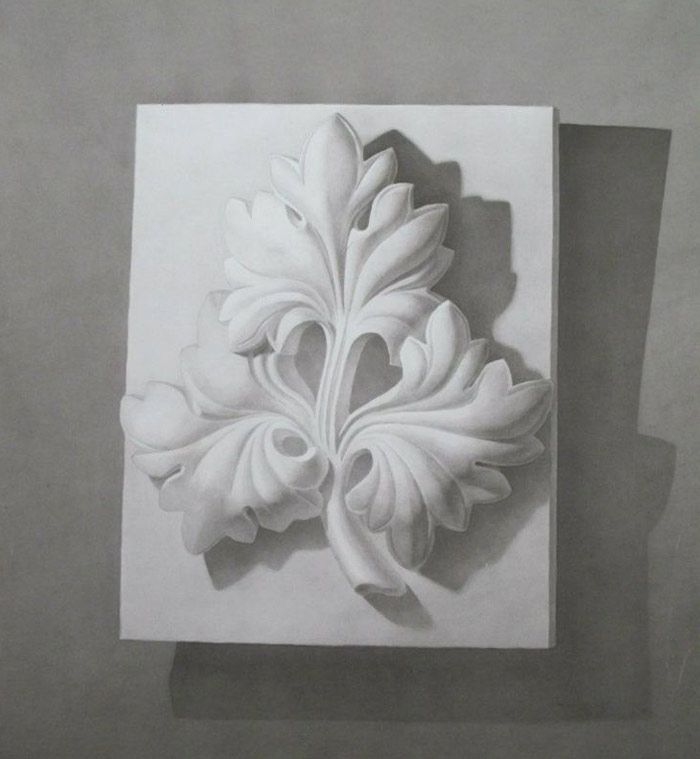Question from Myka, Drawing Academy student
Is it necessary to shade the object with the darkest dark the pencil can go and lightest light?
I’ve been going to an art class that teaches fine art. My art teacher told me that it is necessary to make the darkest spots as dark as the pencil can go and make the highlights as light as the paper. I know that this might have a different effect on the artwork. Does it make the artwork more three-dimensional? Is it absolutely necessary to do this, or can I still not use the full power of the pencil and still make it look three dimensional?
Thank you for helping me improve my drawing skills.
Drawing Academy Tutors
Dear Myka,
Many thanks for your questions.
The good rule when drawing in graphite pencil is NOT to go as dark as pencil can provide.
The lightest areas should be left not-rendered at all, so the support (paper) will dictate how light your highlights are.
When pressing a pencil too hard to achieve the darkest tones it can give, you will end up with shiny reflected patches of graphite that will spoil the look of your drawing.
The question you need to keep in mind is the contrast between dark and light areas and how to keep it in place when drawing, not how to get the darkest tone from a particular pencil.
In majority of cases, you don’t need to go very dark. If you do, you may consider doing the complete artwork in other mediums like charcoal, carbon pencil, or black ink.
When planning your artwork, you need to know the darkest shade of your pencil. It doesn’t mean though that you will go up to this darkest tone in your drawing.
You need to keep in mind the contrast between the lightest and the darkest values in your piece.
Sometimes, when your drawing tool cannot deliver very dark values or when you don’t plan to make a very deep rendering, you may leave un-rendered not only highlights, but also light areas in order to maintain contrast.
To do so, start rendering from the darkest areas and gradually build the tonal values up. Eventually you will reach a point when the tones cannot or should not go any darker, and therefore you will stop rendering the light areas as well.
At all times, you need to maintain the relative contrast between light and shadow.
This is like traditional darkroom photography. The darkest values appear first as light tones, then they deepen and mid-tones start to appear; and finally, as the dark and mid-tones become darker, the light areas begin to develop.
By working in this sequence, you will be able to keep control of how tonal values build up throughout the entire drawing process and to make sure the correct contrast between light and dark areas is maintained.

There are several amateurish mistakes to avoid when rendering tonal values:
- Do not start from one corner of the drawing and move to the other, rendering piece by piece to completion as you go.
- Do not use all the rendering power that your drawing tool can provide as soon as you begin.
- Do not render one area of the drawing to the completion while leaving other areas untouched. The entire artwork has to be developed simultaneously and gradually.
- Do not rub your pencil in both directions on paper. Apply pencil strokes in one direction, lifting the pencil at the end of each stroke.
- Do not be afraid of visible pencil strokes even in smooth areas of drawing. Pencil marks are your hand signature that makes your artwork and creative style unique.
- Do not smudge pencil strokes with a finger or paper stump. This is an amateur mistake practiced by self-taught artists.
- You may place a piece of clean paper under your hand to protect the pencil marks from smudging.
- Keep your pencil well-sharpened at all times. A blunt pencil tip is as bad as a blunt knife (Just ask any chef, if you still have doubts).
- Use a pencil knife to sharpen your pencils; this way you will be able to expose about half-an-inch of the lead. No pencil sharpener will do the same quality job. Pencil sharpeners are only good for children for safety reasons.
- Use the correct pencil grip. Yes, it is very important and there is such thing as the “correct grip”.
You may find this article interesting:
//drawingacademy.com/how-to-achieve-dark-tones-in-graphite-drawing
We hope this clarifies your question.
![]() Kind regards,
Kind regards,
Natalie Richy and Vladimir London
Drawing Academy tutors





